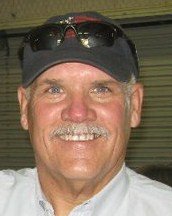Greetings and salutations! Welcome to my inaugural column for the Permian Basin Oil & Gas magazine. I am excited to bring you stories, reports, and ideas. Some of the ideas will be new to even my safety colleagues. Just the same, I hope to bring you a refreshing look at what’s new and what’s old. So sit back, partake, and join me in the wide world of Safety.
by Dusty Roach
I began my safety career in an odd fashion. I was approached by a regional VP who asked if I’d be interested in being in safety. After already racking up 20+ years in oilfield operations, I less than respectfully declined. He asked, “Why not?” and I indicated that, given everything that I saw from the “normal” safety representatives up to this point, I’d end up running them all off. The safety person showed up on location between 8:00 and 10:00, and then proceeded to spend an hour looking at fire extinguishers, band aids, and eye wash, plus checking for deficiencies in PPE. Then they would score us and drive off for an early lunch. Later in the week, we would receive a report of everything that was wrong, with little or no mention of what was right. I am not diminishing the importance of compliance regarding the audit items. However, I did resent the fact that the safety man didn’t notice the derrickman rode the blocks up to the board or that we were mixing visbestos in the mud hopper without masks.
Additionally, there was no mention that we worked 6-8 or even 12 hours tripping pipe without a break. The safety reps had no idea of the real world battles of what we endured while working in freezing weather, pulling a wet string, and enduring the wind blowing up our backside. So, hearing all of this from me, my boss said, “You’re exactly what I’m looking for; someone who knows the ‘real world’ battles of what the guys in the field are experiencing.” Thus my career in safety began. Ironically, so did my education as to what the real world battles of the safety profession were.
Safety departments do not generate revenue; but safety does keep the “generated revenue” that comes in the front door from going out the back door. Due to lawsuits, insurance costs, fines, or loss of customers, safety has become primarily litigation-driven for the oil industry.
The petroleum industry was founded on risk. Whether it was financial, strategical, or physical risk, money seemed to make the risks palatable. When the fatalities and lawsuits reached a level that was out of control, the government acted on what it saw as a legitimate need to establish standards to gain control of an industry that had no formal standards. Now when most companies say, “Safety’s First,” there’s a running joke that sometimes ensues: “Safety’s first to go!” Granted, if we shut down all operations and parked the equipment, we could eliminate all the risks and accidents, and the revenue. So, Lesson Number One: we need Safety.
Going back to a previous point, as a safety rep I often gave safety meetings where someone in operations tells me, your training is ok but you don’t know the real world. All of a sudden my initial sentiments were now thrust back in my face. Lesson Number Two: Until you’ve had to deliver a death message or had one delivered to you, you might not really know what the real world is either. I’ve experienced both.
For instance, if you’ve not experienced the guttural weeping of a wife, mother, or a child when they receive a death notice that their loved one is not coming back home because their loved one was killed in an accident, then it quickly becomes something that will rest in your mind forever.
It goes to show that all of us that we all have perceptions of what the real world is, based on our experiences. If I were to ask a hundred safety people what the best formula for the ultimate safety program is, I would get close to a hundred different answers and the same would hold true if I asked operations. The bottom line is there is not one single formula or process that fits every line of business in the oilfield. The oilfield is dynamic, ever changing. You cannot mitigate all risk. You can reduce it. You can engineer some of it out. You can have policies and procedures. You can monitor it and enforce it. You can attempt to change behaviors. However, you cannot make all people care enough to be safe. Some people do not comprehend the concept of real danger because they’ve not experienced it firsthand. They don’t recognize danger until it’s too late. Safety is a mindset.
So here is a little known bit of information. In the construction of Mount Rushmore, there were no fatal accidents! This was a 14-year project that was done on the side of a mountain, utilizing explosives while doing art with chisels and yet not a single recorded fatality. I’d bet they were not able to provide a single formal Job Safety Analysis. I am certain there were numerous near misses. This feat was monumental (pun intended), LOL! However, numerous workers died, after the project was completed, from silicosis. This was caused by the dust they inhaled while carving out the granite, according to Jean Patrick.
So the real world will always have risks. It’s our job to continue to refine procedures and strive to make it as safe as possible. It’s our job to care. Never give up.
Teddy Roosevelt said, “I don’t care how much a man knows until I know how much a man cares.”
I look forward to sharing with you on numerous topics with in the future. Remember, it’s not how many hits you make in baseball, it’s how many times you reach home safely!










